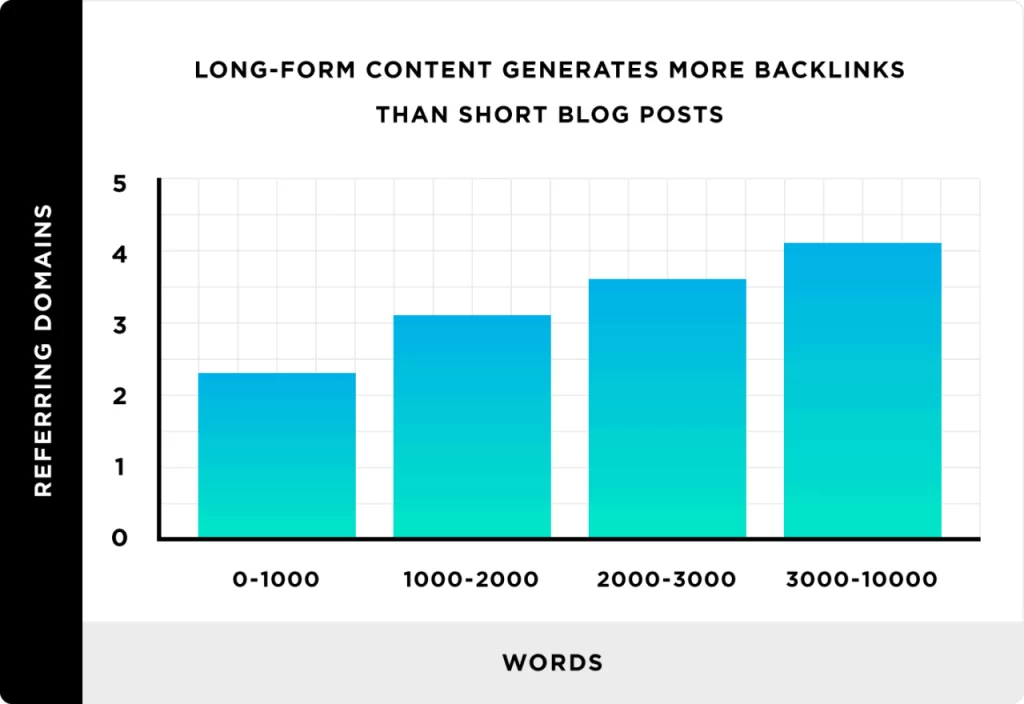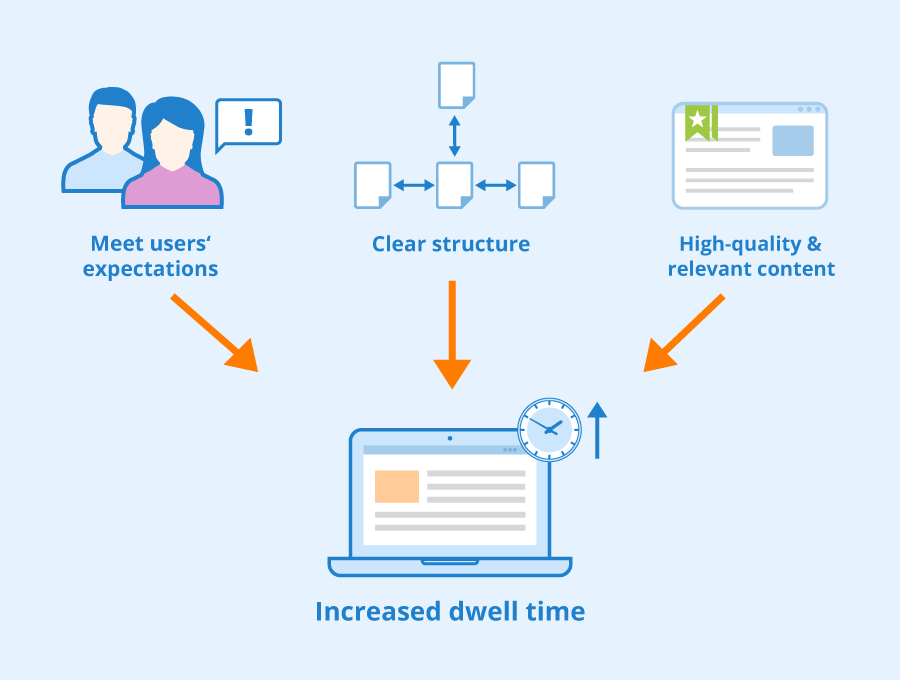How Long Should an Article Be for SEO?
-
Abdul Wadood

If you’re new to the SEO world, you will probably assume longer articles rank better in the search results. Well, that was the case before, but not now. The recent search engine algorithm updates prioritize quality over the article’s length. But that doesn’t mean your article should be too short.
Ahh, confusing! So, how long should an article be for SEO? Read more to find out.
In this article:
Relationship Between Article Length and SEO
In the early days of SEO (1991 to 2005), longer content used to rank better than smaller ones. Google has evolved since then and shifted its focus to prioritize the quality of content. So, a lengthy article that isn’t high-quality won’t rank high in the search results.
Google recommends the content should be “helpful, reliable, and people-first.” The buzzword for Google is E-E-A-T, which stands for Experience, Expertise, Authoritativeness, and Trustworthiness. These factors matter even more if your content is related to health, financial stability, people’s safety, and society’s welfare and well-being.
SEO experts have emphasized the importance of providing extensive and valuable information on the topic you write about. In most cases, covering the necessary information in a short article isn’t possible.
Types of Articles
Here’s how the articles are classified based on their length.
Short Articles (upto 1,000 Words)
Sometimes short articles can achieve the best results. A longer article is unnecessary if you can answer a specific user query directly.
Short articles are suitable for:
- Announcements
- News updates
- Direct questions (for example, how many calories does running 3 miles burn?)
Medium Length Articles (1,000 - 2,000 words)
Medium-length articles strike a balance between providing necessary information and keeping readers engaged. This way, you can satisfy the readers without overwhelming them with too much information.
Long Articles (More Than 2,000 Words)
Longer articles are suitable for:
- Detailed guides
- Comprehensive how-to articles
- Research articles (case studies)
- Tutorials
Longer articles naturally cover more information and address many user concerns. So, they tend to perform better in the search results.
According to research by Backlinko, longer articles generate more backlinks than short ones. They also get more social shares.

Optimizing Articles for Mobile Users
As the number of mobile searches is increasing rapidly, optimizing websites for mobiles has become one of the important ranking factors. In fact, Google shifted its focus to mobile-first indexing, meaning the Googlebot primarily looks for the mobile version of a webpage for indexing and ranking.
Marketers, therefore, should ensure their content looks good on mobile devices.
Mobile users have shorter attention spans than desktop users, so you should structure the article properly to make it easier to skim. Here are some tips to make the content easier to read:
- Add table of contents
- Include visuals
- Utilize header tags
- Write concise paragraphs
- Use bullets to create a list
How to Improve Articles for SEO?
Articles will rank well only if you optimize them for SEO. Here are some tips to improve your article’s SEO.
- Keyword optimization: Perform keyword research to find the best keyword for your article. Target keywords with lower difficulty, as they are easier to rank for, especially if your website is new. You can use SEMRush to perform keyword research.
- Quality content: Regardless of how long or short your article is, it should be informative and satisfy the search intent.
- Write a compelling title and meta description: The title and meta description are among the first things a user will see before clicking on your article. So, they should be attractive and reflect the information your article covers.
- Clear headings and subheadings: Headings and subheadings (header tags) help search engines know what your content is about and also improve readability for users.
- Image optimization: Large images slow down the website, so compress them before uploading. Also, use descriptive alt text.
- Add internal links: Internal links help Google know the structure of your website. It also makes users stay on your website for longer.
- Mobile-friendly design: Mobile optimization is one of the primary ranking factors of Google. So, ensure your articles are mobile-friendly.
- Page loading speed: Google ranks fast-loading websites better in the search results, so optimize your articles to load fast. You can use tools like Google PageSpeed Insights to check the loading speed of your webpage.
- Regular content updates: Update your article at least once a year to keep it fresh.
Here’s a detailed guide to SEO that can help you with everything you need to know to make your article rank better in the search results.
Analyzing User Interaction Metrics
Dwell time, bounce rate, and engagement rate are three metrics often used by search engines to determine whether an article has satisfied the user intent.
So, after you publish the article, keep checking the dwell time, bounce rate, and engagement rate. Ensure you achieve a higher dwell time and engagement rate while trying for a lower bounce rate. Tweak the content to achieve better values for these parameters.
You can use Google Analytics to check these metrics.

Now, let’s take a quick look at each of these metrics.
Dwell Time
Dwell time is the time a user spends on a website before returning to the search results. It’s calculated only when a user visits your article from the search results and not from anywhere else.
Dwell time indicates user engagement. If the dwell time is high, you can assume your article has satisfied the user’s search intent.
Bounce Rate
Bounce rate is the percentage of visitors who land on your article but leave without taking any action (click on a link or fill out a form). Unlike dwell time, bounce rate is calculated regardless of how a user visits your article.
The lower the bounce rate, the better.
Engagement rate
The engagement rate measures user interaction with the page contents. It’s expressed in percentage. If your article is high-quality, the engagement rate will automatically be higher.
Conclusion
The length of the article depends on the topic you choose and user intent. If you write a guide, it should cover everything about that topic, so, of course, it should be lengthy. If you answer a direct question, as I did in this article, the article can be short.
Search for your primary keyword and go through the top-ranking articles. To make your content better, try covering the information missing in those articles.
